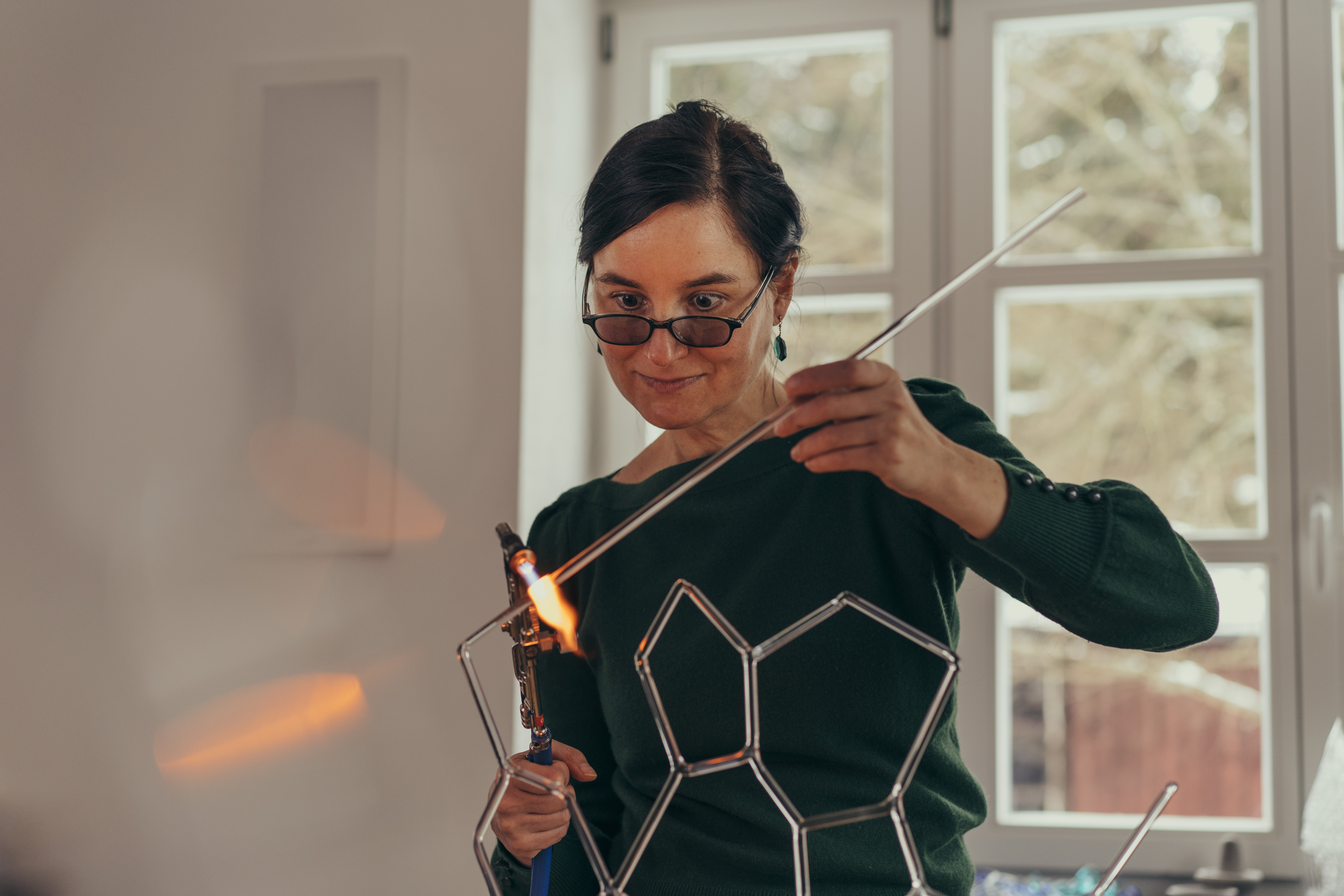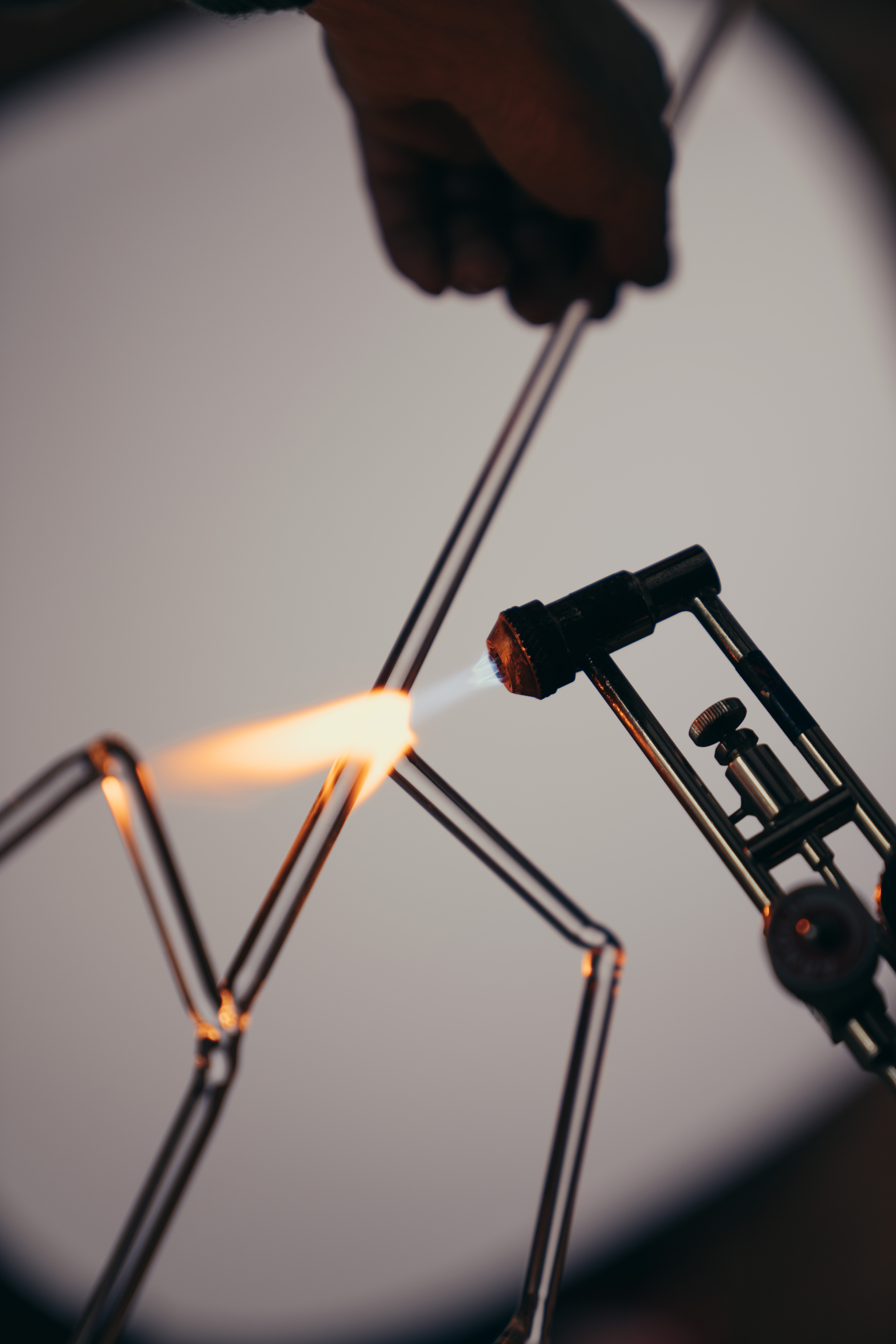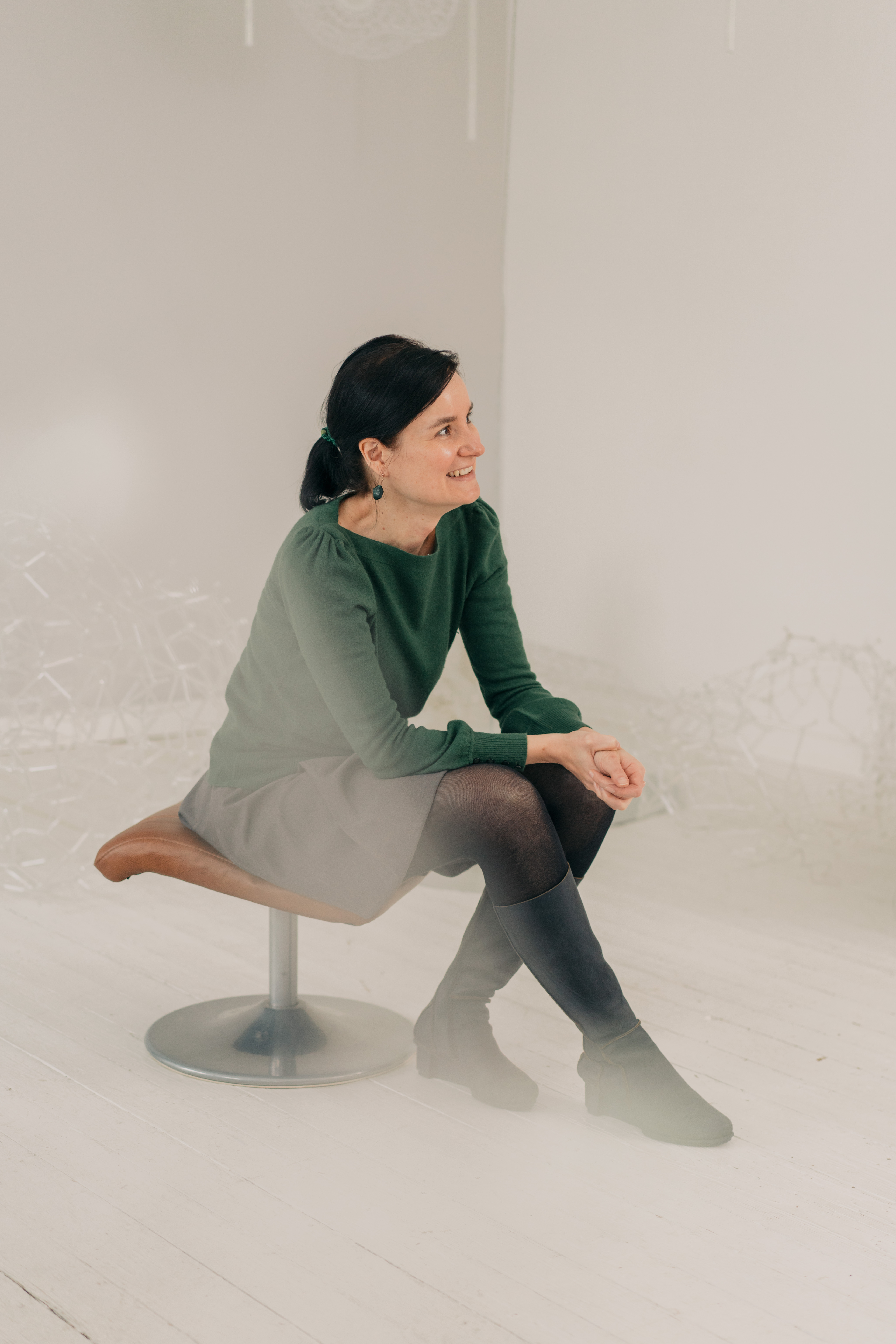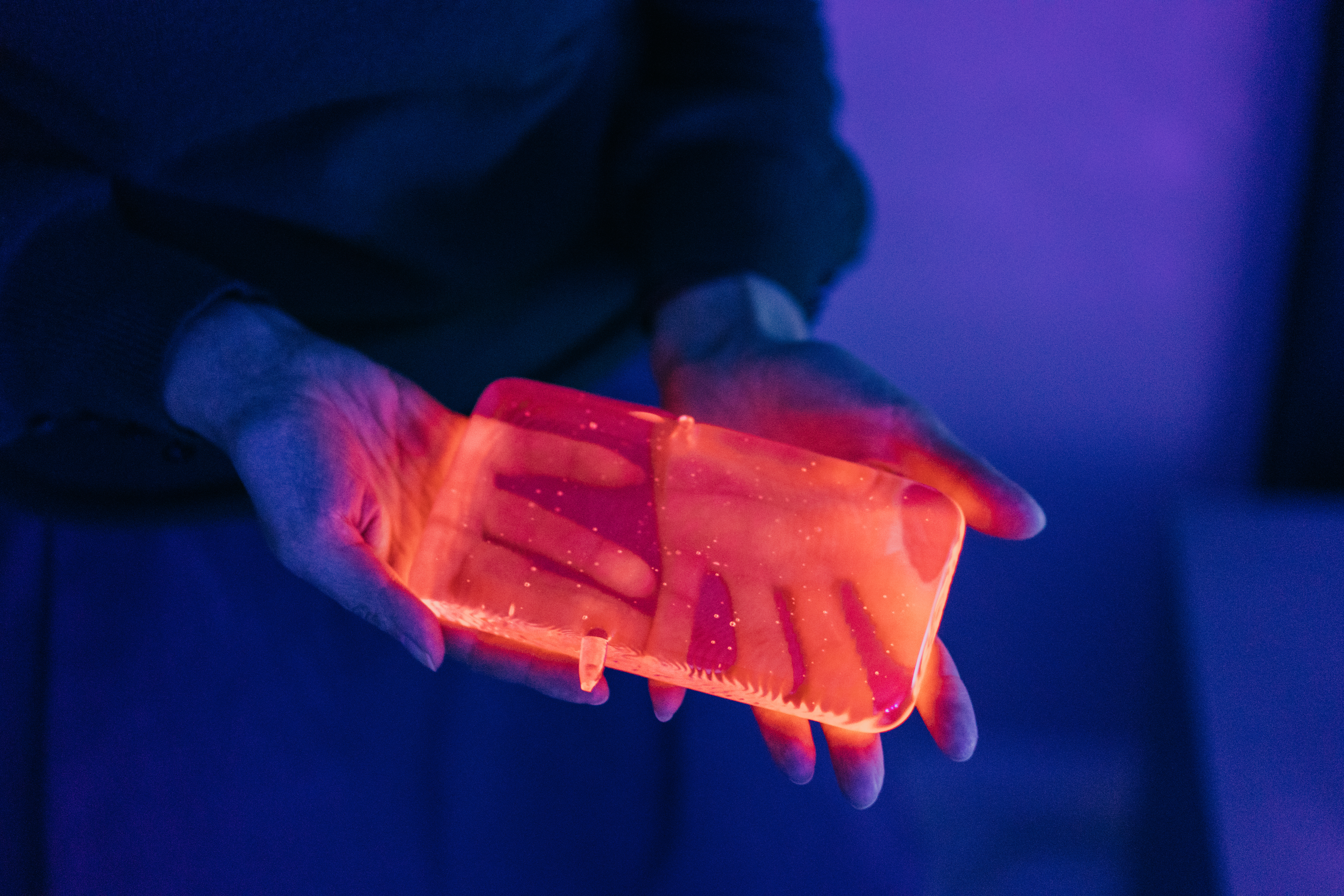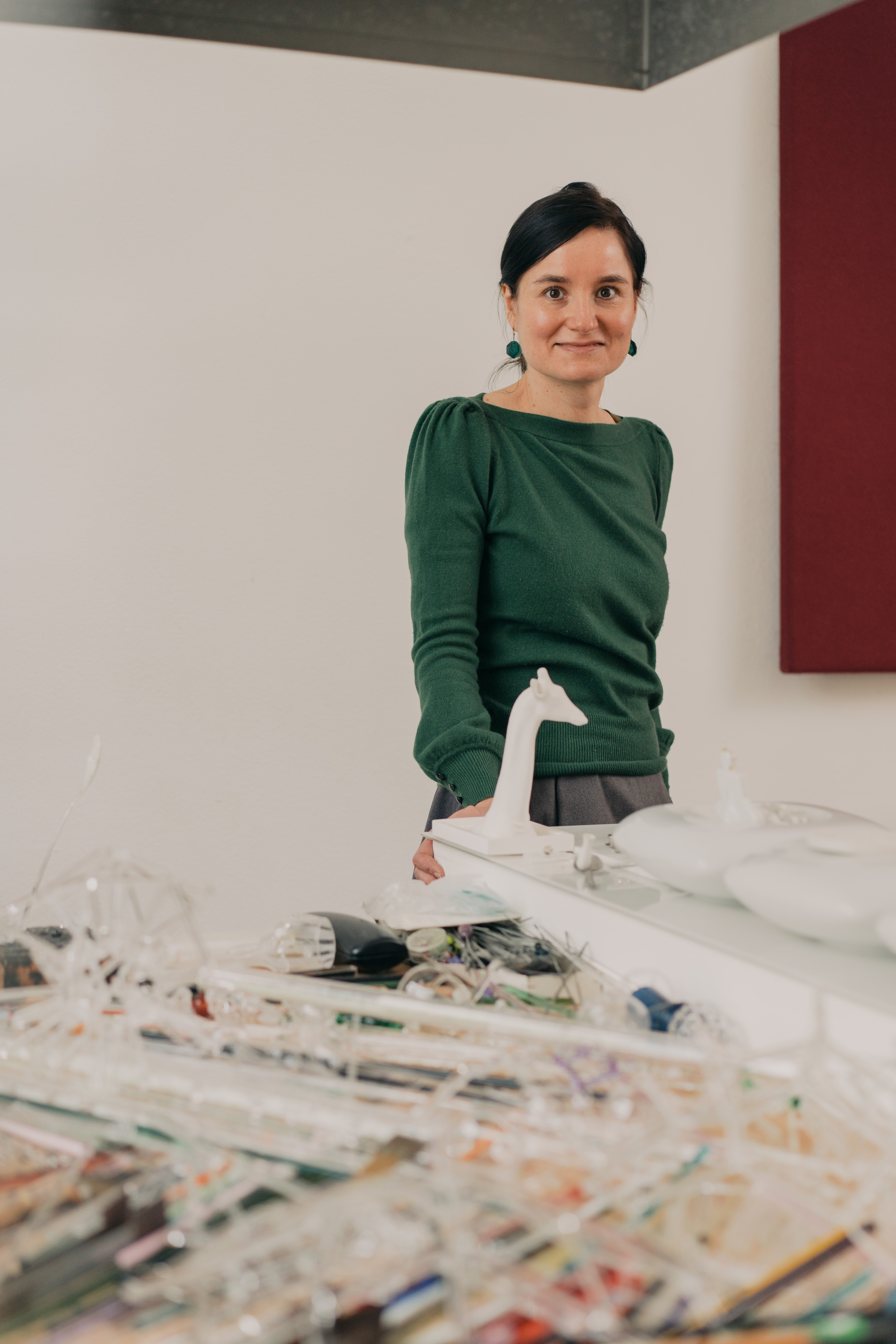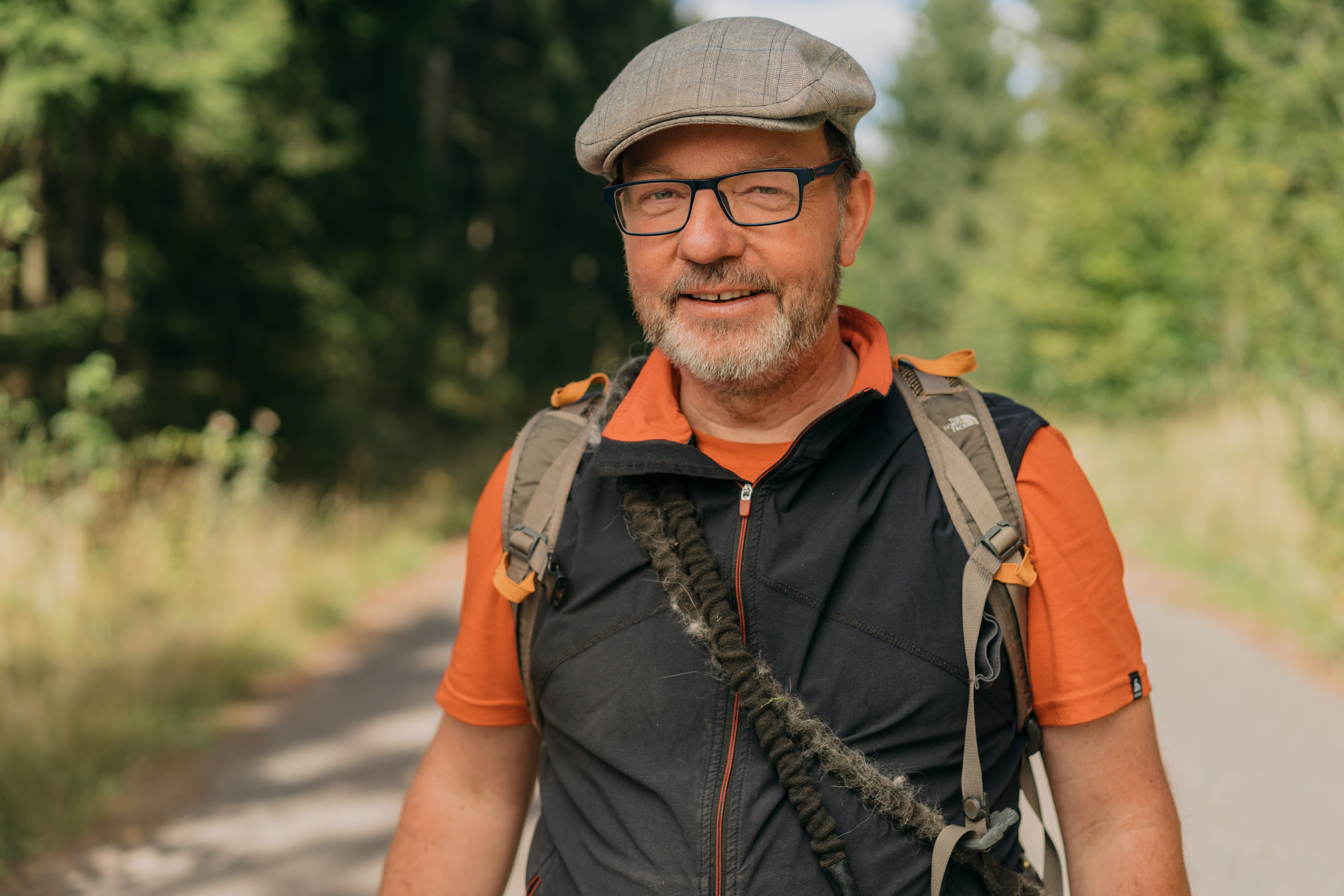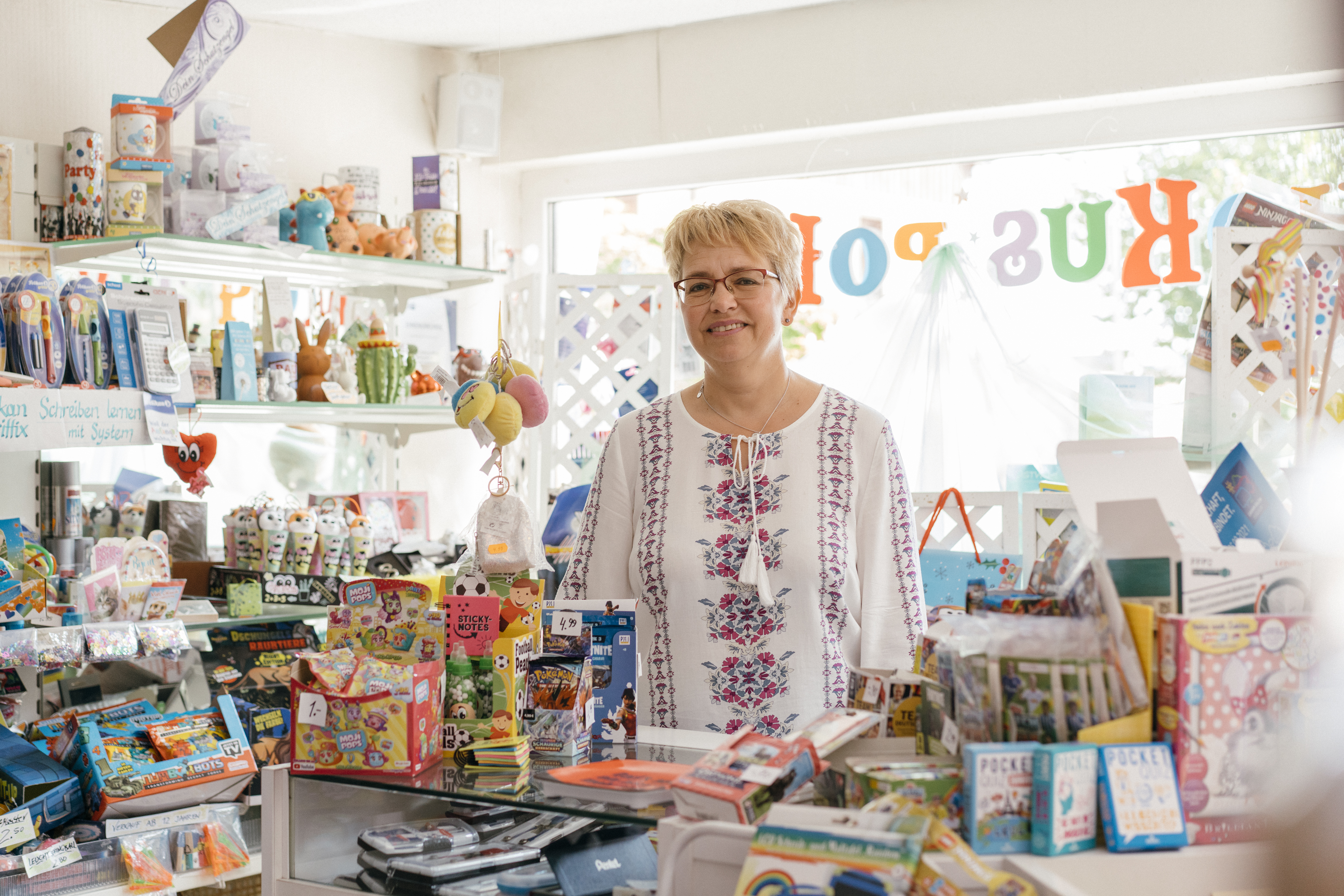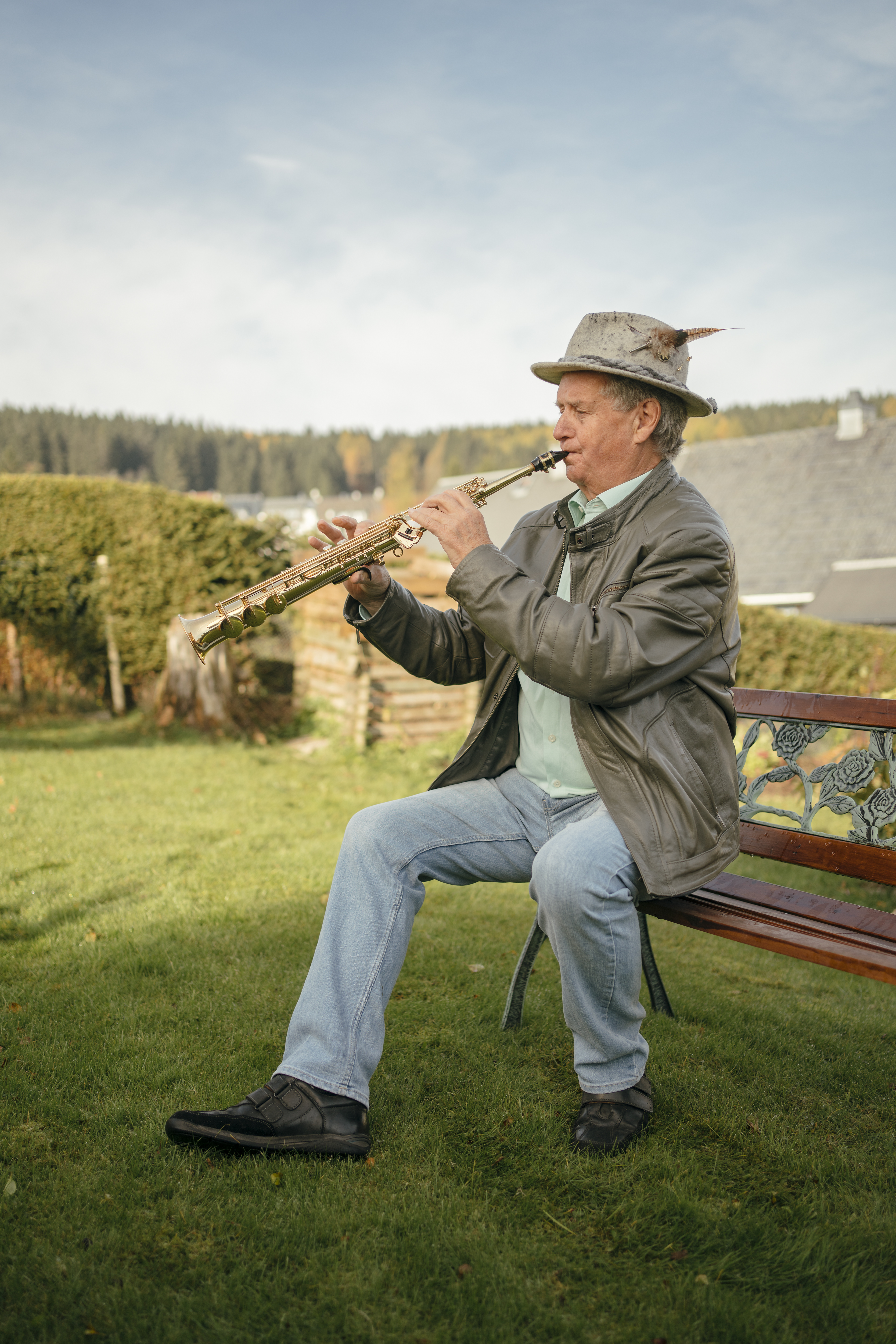HER(R)BERGSKIRCHEN
SHOW ON MAP
SUSAN LIEBOLD
THE RESEARCH ARTIST
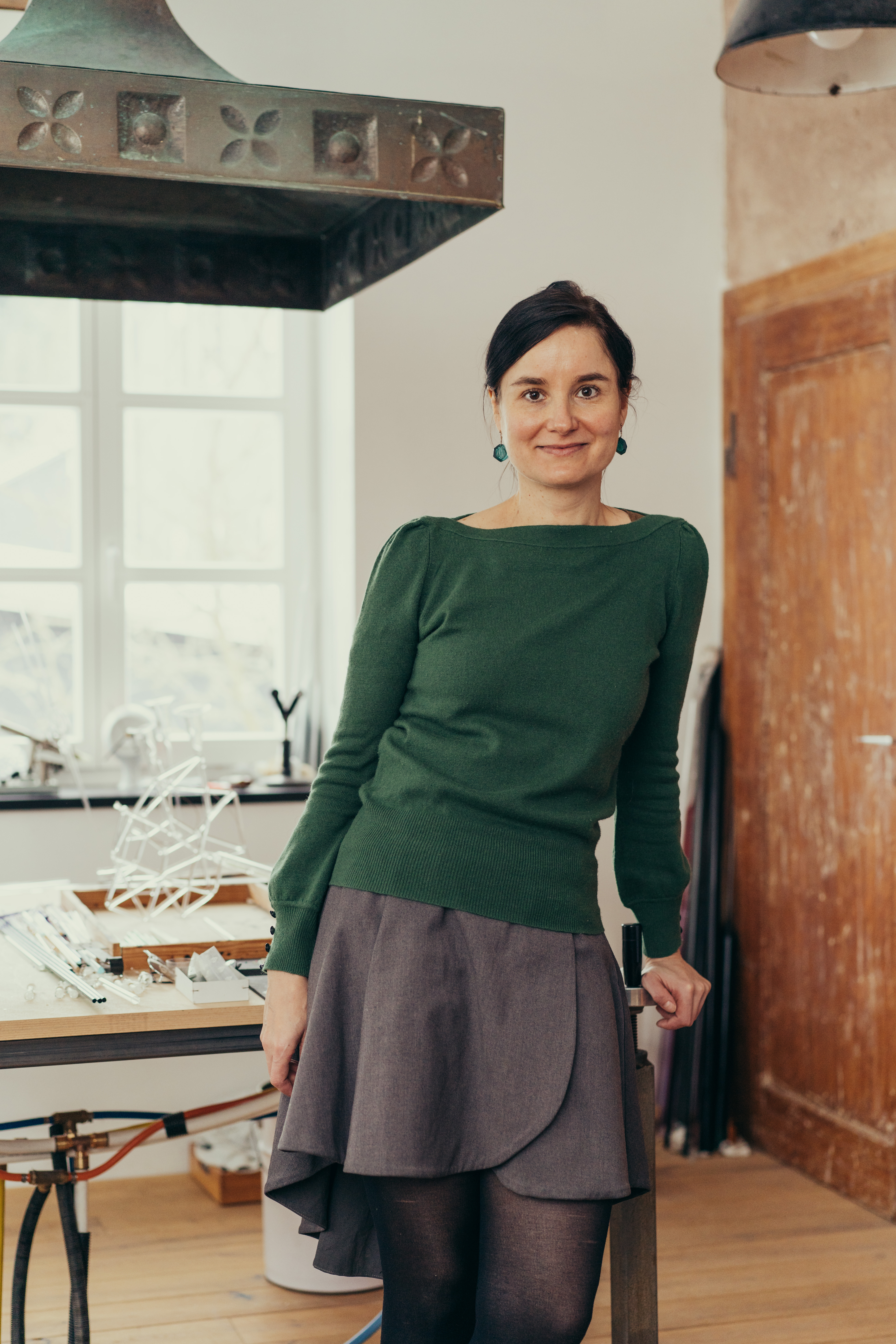
Susan Liebold laughs. She does that often, and always has. Perhaps it's her way of showing her teeth. She inhabits the space where biological curiosity, artistry, a sense of play, chemical reaction chains, the fragility of glass and the power of the Bunsen burner meet. In between these many worlds, the 43-year-old still feels the need to assert herself as a woman. “When my future husband and I started helping out and exhibiting at my parents' café in our early 20s, people thanked me for the cake and him for the great glass work,” recalls the artist, who was born in Neuhaus am Rennsteig. Today she is one of the most sought-after glass designers in Germany. Her installation-based works, some of which are stunningly illuminated, have been exhibited in Switzerland, Denmark and the USA. But the matter of the material for her design objects was not always so crystal clear.
When my future husband and I started helping out and exhibiting at my parents’ café in our early 20s, people thanked me for the cake and him for the great glass work.
“I had already acquired the craft by the time I graduated from high school, because I grew up with it,” Liebold explains. “But during my studies at Burg Giebichenstein University of Art and Design in Halle, I quickly realized that I wanted to create large scale works. What I saw in Lauscha, my home town, was the opposite.” Through her fascination with dance and performance, harmony theory and the natural world in which she grew up, Liebold pushes the material to its limits. She is developing a stable mesh structure that will allow her to work with objects up to 13 meters in diameter. She is also working with a glass chemist at the University of Jena on fluorescent and phosphorescent glasses that glow with the help of UV light. These have become Liebold's trademark. “A van, a bit of paper, and that's it,” she says jokingly, “and the sculptures are already standing in the forest during thunderstorms.” Heat-resistant borosilicate glass, invented in Jena in the late 19th century, makes this all possible. “It's also used for casserole dishes and laboratory equipment,” Liebold explains. “It allows me to use the flame to heat part of the glass several times without the entire object shattering. It's the only way I can create these complex shapes.” In contrast to the rather technical production of her work, Liebold talks about her sources of inspiration as if she were a child in the forest searching for treasure. “It's quite intuitive. I react to what comes to me from nature. The Thuringian landscape has shaped my sense of form,” Liebold says. “Sometimes I feel like a biologist, that's how closely I study nature. I observe things through a microscope, draw, try to capture things in their essence, observe the organic essence of things, to sense the animal and create an image.”
I react to what comes to me from nature. The Thuringian landscape has shaped my sense of form.
The Thuringian glass tradition lives on through her progressive works, and through the place she creates them in. Sonneberg is “the border town to Franconia and was the focal point of the meetings and encounters that took place after the fall of the Wall” she says. Her center of work and life to this day is the former gas plant that houses Liebold's studio, (without a telephone), and the café where her husband bakes cakes on Sundays. In the Ozeaneum Stralsund, for example, in the Baden Forest, in Bayer-Leverkusen and perhaps someday between volcanoes and geysers, if the artist among natural scientists has her way: “I've been working with brain researchers from Ilmenau and the Institute for Sensory Technology at Coburg University on a touch sensor project for years. I would like to see this work in Iceland, but I am also quite easy going and try not to have too many expectations,” she says - and laughs. “Things will come my way, they always have. And maybe someday I'll understand why.”
